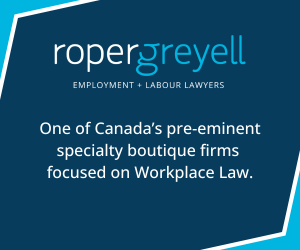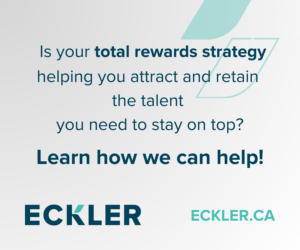Talent Wanted: It Pays to Play in the Workplace
Outside of sports fields, concert venues and the stage, “playing” for pay has not been included in the context of more traditional work spaces for a very basic reason — old-school notions of work did not include play.
Often derided as an inappropriate distraction and a waste of time taking away from the “real work” of the appropriately named workplace, more agile thinking is pushing the past paradigm of play off the pitch.
While the old-fashioned paradigm asserts that people work to earn pay in order to play on off-hours, newer thinking disagrees. After all, in an increasingly competitive, complex and disruptive talent market, the promise of play when every company is offering pay, is a defining one.
And while this may hold particularly true for the Millennials in their quest for meaning alongside remuneration, the potency of play can impact every generation in the workplace, as well as their decisions regarding where they work.
More Play = Better Culture
In his book, Play, Stuart Brown, MD founder of the National Institute for Play, compares play to oxygen: “It’s all around us, yet goes mostly unnoticed or unappreciated until it is missing.” This notion sounds very much like the HR concept of how an organization culture affects productivity.
“Not only does having a playful atmosphere attract young talent, but experts say play at work can boost creativity and productivity in people of all ages,” says Brown. “There is good evidence that if you allow employees to engage in something they want to do, (which) is playful, there are better outcomes in terms of productivity and motivation.”
Impact of Play in the Workplace is Revealing
In fact, a somewhat recent paper, “Play at Work: An Integrative Review and Agenda for Future Work,” (Petelczyc, 2017) has taken a closer look at the concept of play and the numerous benefits for employees, teams and organizations. In addition to the upsides for the individual, work teams can benefit from play too with increased trust, rapport, buy-in and teamwork.
Other research shows that play can decrease absenteeism, stress and health care costs. When employees take time out to play, it lessens the stress of work, which leads to less sickness, a more positive attitude and more energized work environment.
With organizations striving for greater engagement and positive energy, having fun at work is not only encouraged, but one of the ultimate objectives. The many advantages can include higher employee commitment, greater transparency, inclusive decision making, and increased team agility. Play also leads to having fun, being joyful and energized so wouldn’t it make sense that organizations would want its employees to have fun while at work?
Play is Essential to Productivity
Moreover, play may be the missing link in the bigger picture of productivity. Humans cannot operate like machines; the belief that employees should always be heads-down and fully productive from start to end of the workday is simply not realistic. The high tech industry has always been an advocate of incorporating playtime into their work day. These early adopters have encouraged fun and amusement as part of its culture of creativity and innovation.
Organizations like Google, Electronic Arts, Facebook, and LinkedIn have unlimited access to play activities such as bowling, indoor climbing, arcades, yoga and volleyball. These activities are not just for lunchtime, but encouraged throughout the workday when employees are tired of the mundane work activities and need a mental break.
Productivity flows naturally when we are actively engaged. The concept of organizational play affects workers’ use of resources (time, energy, focus), how employees can regulate emotions (meditative release and mental relief) and how it enables them to reach their organization goals (building relationships and stronger networks).
Harnessing Play Power
HR professionals, trainers and consultants have been using games and novel activities to bring play into team building and workplace culture for a while now. When learning is fun, employees are more likely to remember what they learned and there is a greater chance they will apply the new knowledge. Research has found evidence that play at work is linked with less fatigue, boredom, stress, and burnout in individual workers. Play is also positively associated with job satisfaction, sense of competence, and creativity. Studies show that when a participant receives a task that is presented playfully, they are more involved and spend more time on the task.
Promoting a sense of play in the workplace is simply good for business and increasingly requisite in a tighter, smarter talent market. The opportunity to play on the job shows employees that they are valued as whole individuals by a leadership that recognizes the positives of leading more balanced lives.
The ROI Formula for Play at Work
As such, the fun factor “plays” a fundamental part in an organization’s vibe, connections and relationships. A playful organization nurtures more trust, which in turn opens up more potential.
Leaders who set the overall tone by embodying this trust are inevitably rewarded with results.
With trust and play at the core of a culture, employees are more engaged, collaborative and focused.
Encouraging playfulness increases job satisfaction — and happier workers have been shown to be more productive. This ultimately leads to better performance and increased profits.
In other words:
Play = Trust + Happiness + Engagement + Productivity
The Play Effect
Modern living is integrative and less compartmentalized than in previous generations. It is a much more wholistic and authentic approach as everything is inter-related and interconnected; it would be foolish to expect that we leave parts of our personalities, skills or other characteristics at home while showing an alter ego when we go to work. We now know that compartmentalization and silos don’t produce the same results as integration and cross-functional teamwork.
Of course, even organizations who aren’t in high tech can apply the principles of play. Fostering a culture where employees can be multi-faceted and fun-loving is a wonderful conduit to greater engagement and productivity. It can also transform rigid management styled from overly controlling principles to participatory teamwork and gratifying collaboration. This type of shift helps bridge generational differences and provides a power allure in the hiring process as well.
It Pays to Play
When we think about how play shows up in our lives, it’s everywhere: in games, art, books, sports, media and everyday conversations. It makes sense that the business world and work environment incorporate these aspects to attract and retain employees.
Aspiring to create a playful organization is not just a trendy new idea but an innovative management strategy. Organizational leaders should strive to cultivate curious and easy-going employees instead of heads-down laborious grinders in the workplace. As for the bottom line, making fun a fundament of the workplace supports a return on investment because it pays to play.
For suggestions on how you can incorporate play in your workplace, read, Surpassing the Science of Stress: More Play in the Workplace Lowers Stress, by Isabelle St-Jean
Amelia Chan, CPHR, RCIC is founder and principal consultant of Higher Options Consulting Services (HR-options.com), providing a wide range of HR and immigration services for small to mid-sized businesses.
For the latest HR and business articles, check out our main page.









